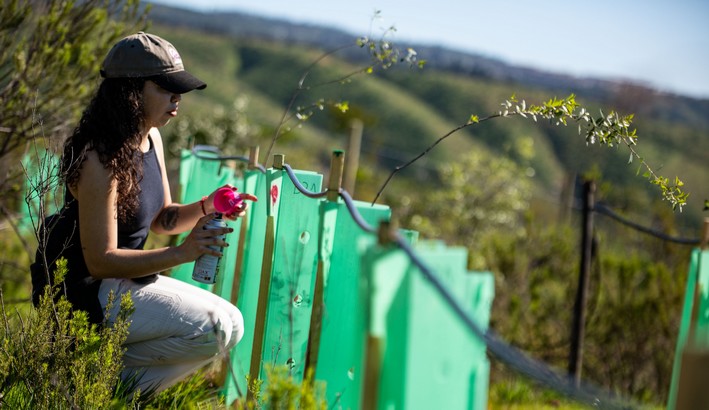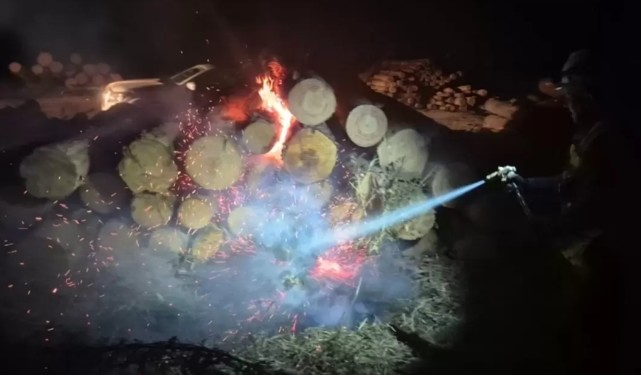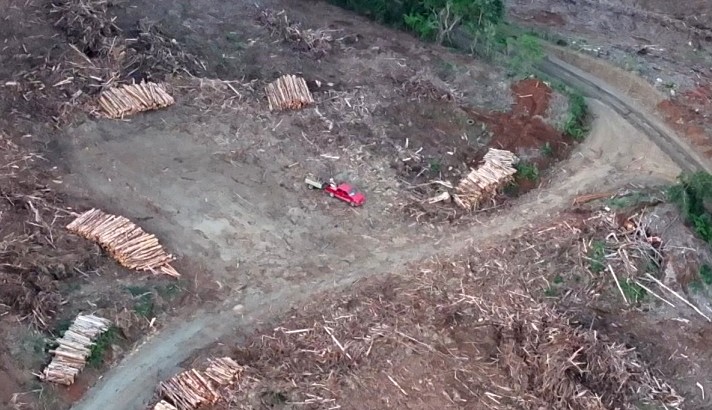UV Students Use Cyanobacteria to Recover Native Forest
A group of students from the Ecological Restoration course of the Environmental Civil Engineering program at the University of Valparaíso participated in a session to apply a bio-input with biostimulant and biofertilizer characteristics to degraded soils in lot C of the Viña del Mar Botanical Garden. These soils were affected by the mega-fire of February 2, 2024, and are currently undergoing a reforestation process.
The activity was part of the Fondef IDeA R&D2024 Project "Validation of the Production and Application of Nitrogen-Fixing Cyanobacteria, at a Pilot Scale, in the Recovery of Native Forests Affected by Wildfires," led by Professor Romina Álvarez, who described the action as "a relevant milestone because it allows them to learn about reforestation processes in practice."
"The activity involved preparing different doses of cyanobacteria to be applied to Quillay, a plant from the sclerophyllous forest and our study subject, to later evaluate its morphological behavior and physiological state. Our goal is to improve the indicators and their survival post-application and post-reforestation," she commented.
The researcher stated that "it is common that after reforestation in degraded soils, only forty percent (of the specimens) manage to survive under those conditions. These cyanobacteria should improve soil fertility, so we could improve that percentage."
"This project has a duration of two years. The first stage was to produce the cyanobacteria, which involved using pilot-scale photobioreactors that we developed in lot A, the tourist area of the Botanical Garden. What comes next is to continue using this reforestation space provided by the Wildtree Foundation, applying it to other species of the sclerophyllous forest," she added.
Life Below the Soil
Adriana Arancibia, Head of Horticulture at the Botanical Garden, emphasized that "the value of this work is incorporating a new important protagonist that the Garden, with its capacities, would not have been able to address. In this sense, the UV has been a great contribution because it makes us look at the soil and the life beneath it. The students did brilliant work in the laboratory developing cyanobacteria that will release nutrients very important for these plants."
Meanwhile, Benjamín Véliz, Director of the Wildtree Ecological Network Foundation, one of the project partners, highlighted that "as a private entity, we have managed to reforest nearly ten hectares with an irrigation system that is part of an ecological restoration push in lot C, which is the conservation area within the Botanical Garden."

















